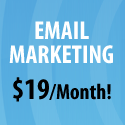Think of banner ads as the spice in your affiliate diet. Sprinkle them around, but for a heartier helping of sales, you’ll need something more solid! Learn to give your visitors longer, more descriptive pre-sales text. Revamp your affiliate advertising using these simple steps:
- Pull the Reader in
- Introduce the Product
- Explain the Product’s Significance
- Tell the Reader to Make a Purchase
Pull the Reader in
To convince your audience that your text is worth reading, make your first sentence or two very interesting. Make a bold statement, say something seemingly ridiculous, or appeal to your prospect’s emotional side. Then, tie this grabber in with the rest of your copy.
Introduce the Product
What is the product you’re advertising? What does it do? Directly after your grabber, give a compact explanation of your product. Keep this explanation short, while still being very clear. This should still be a very short section of your text.
Explain the Product’s Significance
What will it do for me?
By writing your own copy, you can directly target your unique audience. Make the most of this opportunity! Clearly explain how your readers will benefit from this product.
No one knows your audience like you do. Suggest a variety of product uses just for them, and give examples. This is the time for details – make this section long and rich.
Tell the Reader to Make a Purchase
You’ve come so far – you’ve laid out exactly what the product is and how it will help your unique audience. Now, seal the deal – tell your readers to purchase the product! Include your affiliate link in this section.
This step may sound strange, but it’s necessary. Often, people hear about a product and are genuinely interested, but fail to actually make a purchase. A clear call to a simple action cuts down on buyer ambivalence. Don’t be pushy – just change your verb tenses to the imperative. Instead of:
“If you think that you fit this profile, you might want to think about buying this product.”
Say: “Click here to order an account today.”
Drive Sales – Use Long Copy
If you don’t feel ready to write long copy yourself, ask your affiliate program manager for help! Many companies release well-written articles by respected authors that you can reprint free of charge.
The novelty of the Web is wearing off. People online now are busy. Surfers won’t make a purchase unless you make a great case for what they’ll get out of it. And you’re not going to do that with just a banner ad.
.
=-> Increase your sales using these types of methods, to get started you need a Aweber account.








